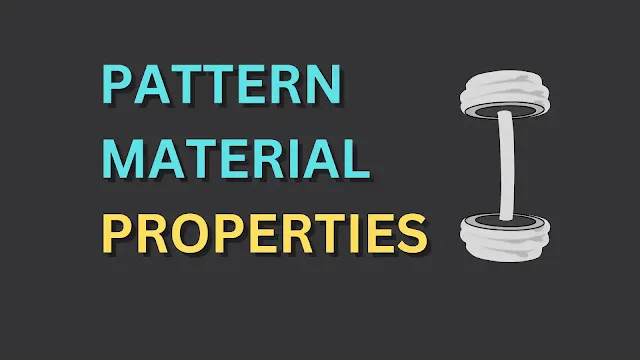Properties of Pattern Material

|
| Properties of Pattern Material In Casting |
The pattern used for making mould cavities in the sand-casting process should have certain properties.
I have discussed 17 important properties that pattern materials should have before using them in the casting process.
These properties are important while making pattern in casting.
17 Properties of Pattern Material In Casting Process
- A pattern should be light in weight for easy handling of the pattern in the foundry.
- Should be easily workable on machines having good machinability.
- Pattern material should be reliable and durable for a long time as it can be used for producing multiple casting can be used.
- Patterns should not change in shape and size with variations in humidity, moisture, temperature and due self-weight.
- The pattern should have less wear, tear and abrasion.
- The cost of production of patterns should be low.
- Patterns should be easily and readily available at an affordable price.
- Metal pattern material should be resistant to corrosion as they are in continuous contact with the mould sand.
- Pattern material should not react to chemicals in the sand.
- Pattern material should be strong enough and not fragile as the pattern should not get damaged during the ramming process.
- Patterns should be easy to replace, repair and reuse.
- Patterns should be easy to service and maintain.
- Pattern material should be durable and sustainable to changes in temperature and moisture content.
- Should ensure consistency in the quality of the final casting.
- Pattern material such as metal in the shell moulding process should sustain a high thermal gradient temperature during the formation of mould.
- The pattern should have hardness, toughness and strength enough to sustain forces during sand ramming and handling during pattern making and while making mould cavities.
- For metal pattern material used for shell moulding, the pattern should have high thermal and electrical conductivity.
- The pattern should sustain tension, deflection and compression during pattern making and cavity production process without affecting the quality of the final casting.
Properties of Pattern Material In Casting Conclusion
There are types of patterns used in the sand casting process made by various pattern materials.
Pattern material is selected for a pattern based on various factors for pattern material selection.
If engineers have to make casting in large quantities metal has good pattern material properties over wood patterns.
Metal material as it is strong has wear and tear resistance, is durable, can handle forces during sand ramming and is easy to machine but has issues with moisture. The wood pattern should have a high density for this.
Wood is selected for large-size casting as it has properties such as being light in weight and cost low as compared to metal.
Plastic has properties such as being light in weight, and resistance to moisture, humidity and corrosion but is not as strong as metal.
The final sand casting produced in the manufacturing process will depend upon the characteristics of the pattern material listed above.
